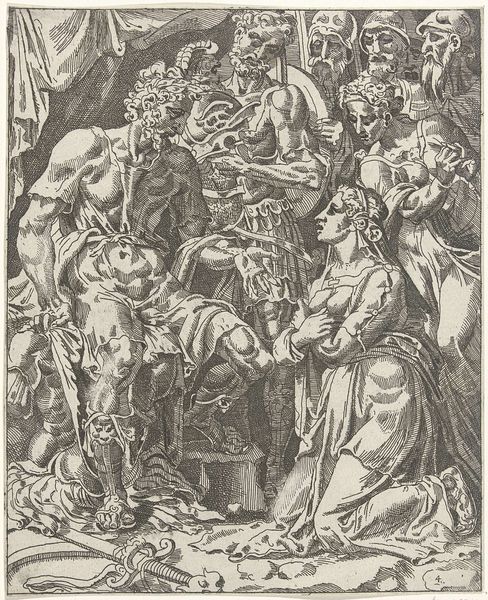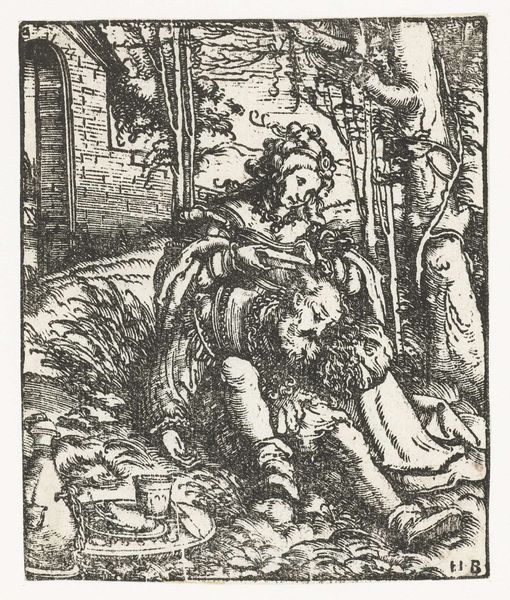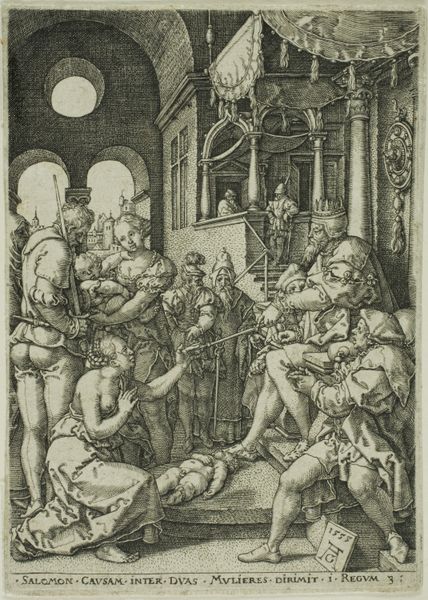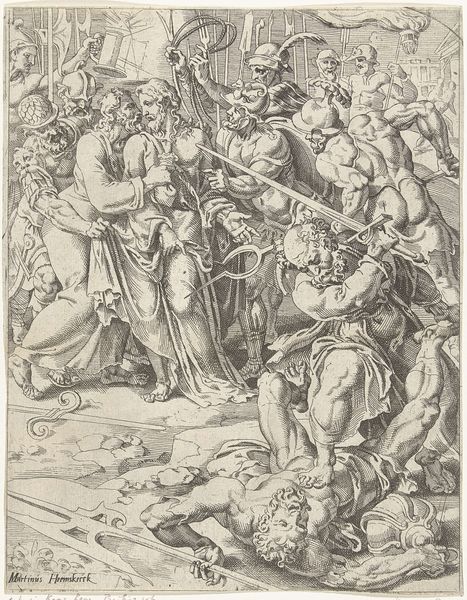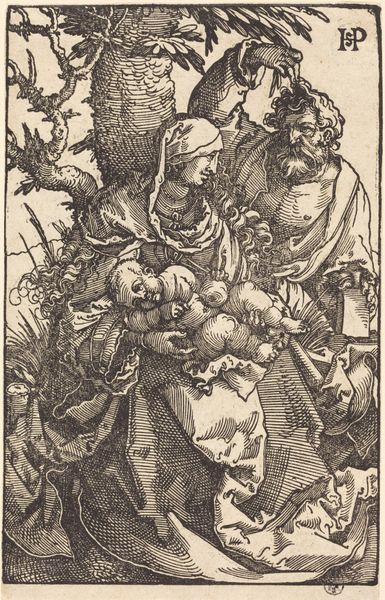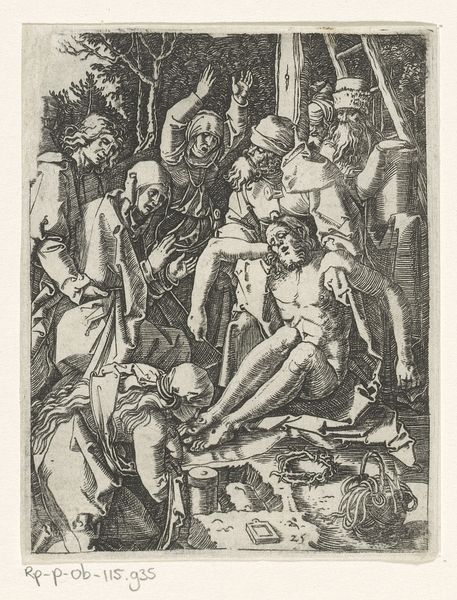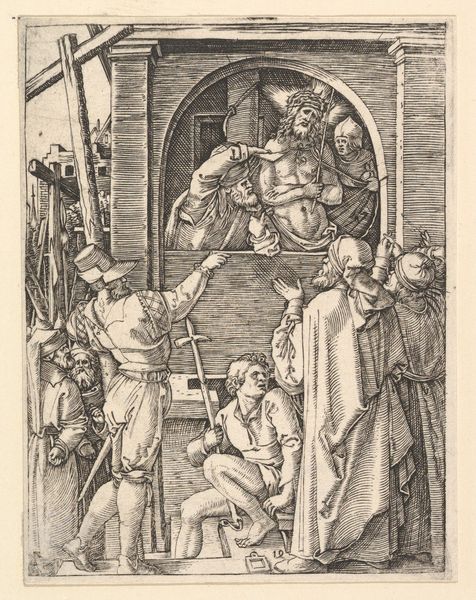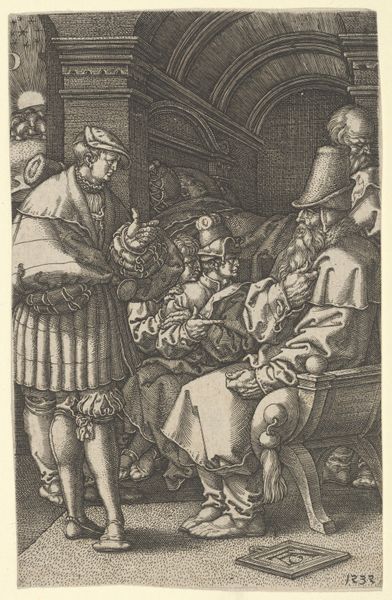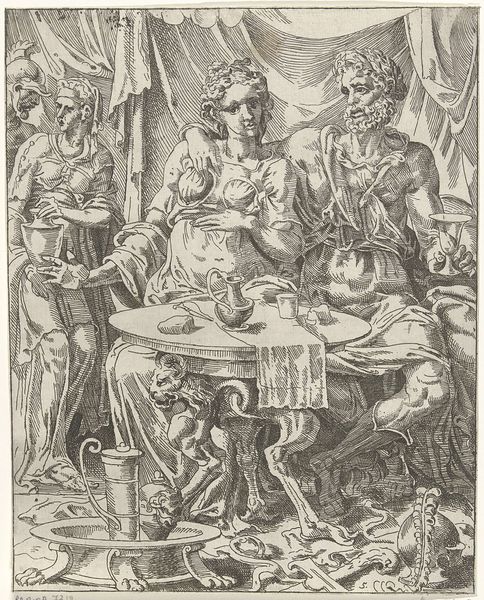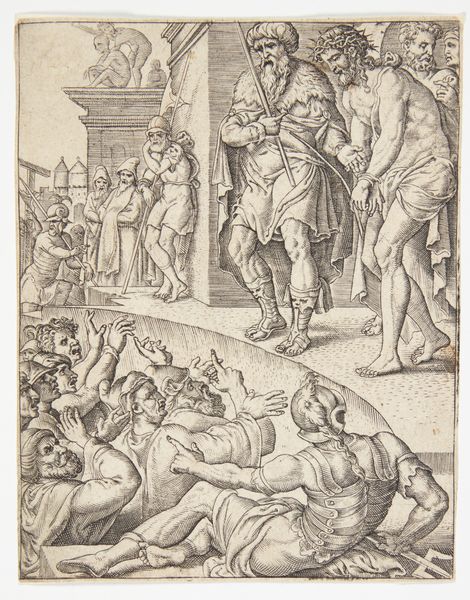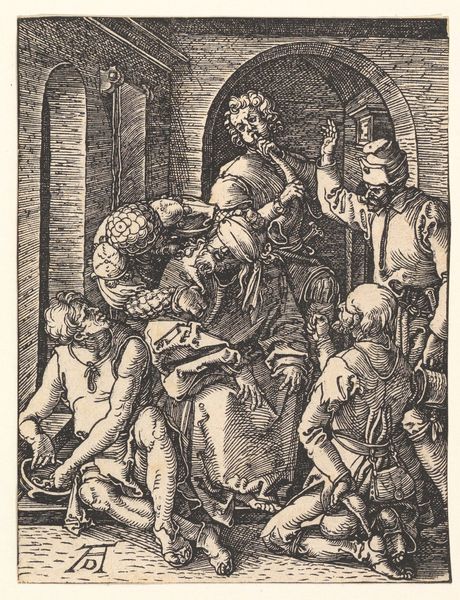
drawing, ink, pen
#
drawing
#
baroque
#
pen drawing
#
figuration
#
ink line art
#
ink
#
group-portraits
#
line
#
sketchbook drawing
#
pen
#
history-painting
Dimensions: height 137 mm, width 93 mm
Copyright: Rijks Museum: Open Domain
Editor: So, this ink drawing, titled "Verschillende heiligen" or "Various Saints," was created by Antoine Sallaert around 1635. There’s something almost frantic about the linework, and yet the figures appear quite stoic. What stories might be hidden within this dynamic composition? Curator: The Baroque period, particularly in regions like Flanders where Sallaert worked, was heavily influenced by the Counter-Reformation. How do you think that religious and political tension might manifest in an image like this? Editor: I hadn't thought of it in that context, but I suppose it’s not simply a gathering of saints. The intense emotionalism contrasts with the classical roots of their poses, hinting at those societal pressures. Curator: Exactly. Notice the grouping of the figures; their proximity suggests a communal strength. Consider where a drawing like this might circulate. Was it a preparatory sketch for a larger work, intended for public display, or perhaps a more private devotional piece? This affects its function and its impact. Editor: The latter feels right; there's a raw, personal feeling to it. Did Sallaert have much influence on how religious figures were represented later on? Curator: He played a significant role within his local artistic circles, and works like this demonstrate the dynamism artists brought to religious imagery during times of change. Think about how different portrayals might appeal to distinct audiences, emphasizing particular virtues or rallying against perceived threats to the faith. Editor: So the frantic lines, instead of reflecting chaos, underscore a fervent, deliberate choice during a turbulent time. That really makes you appreciate the context in which art is made. Curator: Indeed. It reminds us to consider the multi-layered conversations artists are having with society.
Comments
No comments
Be the first to comment and join the conversation on the ultimate creative platform.
